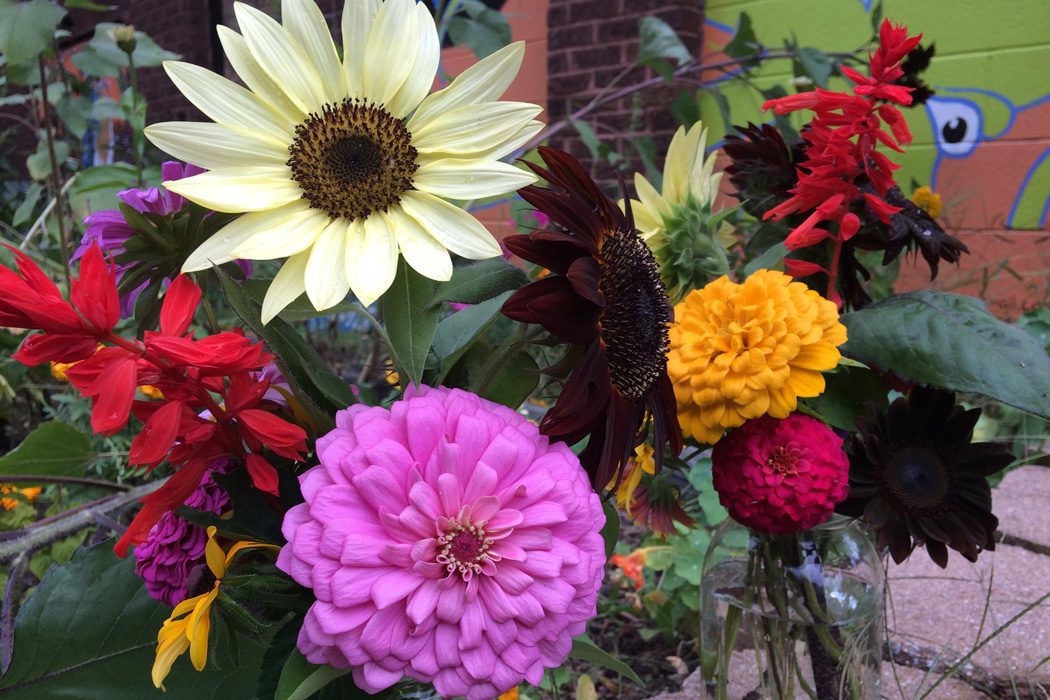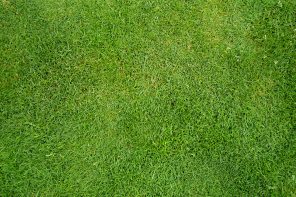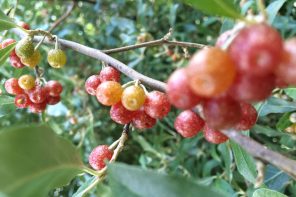When Rob and I received an invitation from Pastor Bennett to attend his church’s annual picnic, we were honored, but bummed that we couldn’t attend. New Jerusalem Baptist Church, located just a block from the Huss Project, is a congregation we’ve been building a relationship with since we purchased the old elementary school in the neighborhood in 2009. The church is a spiritual home for many of our black neighbors, an institution of their own among many others in our city where people of color struggle to belong. They’ve been abundantly generous and encouraging with us white kids as we bumble along and improvise something like a contribution to the surrounding community without just colonizing a place that doesn’t belong to us.
In order to contribute to the event, even though we couldn’t hang around, I decided to cut some flowers from our urban farm to offer as a gift for the gathering. What the bugs had not munched and the neighborhood rapscallions had not crushed or uprooted, I selected and arranged into jars—zinnias, black-eyed susans, sunflowers, Jerusalem artichokes, salvia, asters. I snapped a photo of the bouquets and texted it to one of our summer interns who had planted many of the flowers with no expectation of ever seeing them bloom. After a summer of busyness that nearly suffocated us at times, I was feeling pretty damn proud of myself as we walked the flowers over to the church and chatted for a bit before we had to run off to the next thing.
The next day, a neighbor who listens to the police scanner called: there was a fire at the Huss Project. The fire department was on its way. Turns out some neighborhood kids—maybe the same ones who destroyed part of an art installation and broke a window out earlier in the summer—had set fire to some of the hay we use to mulch the vegetable beds. Thankfully, the physical damage was minimal, but it was yet another emotional wound in a process that has felt at times like death by a thousand cuts. For every vase of flowers, there’s a vegetable fight in the garden. For every bag of produce we deliver to the Domestic Assault Shelter, there’s an apple tree stripped before the fruit is ripe. For every successful event, there’s a sneaking suspicion that we could be doing more, and doing it better.
In Three Rivers, where miles of major waterways divide us into four neighborhoods marked by surprisingly distinct demographics for a town of 8,000, the bridges might be read as fragile symbols of the tiny threads holding us together. The two neighborhoods that are most distinct from each other, First and Second Wards, are tied together by a mere two lanes of car traffic spanning a bend in the meandering St. Joseph River. Heading south on foot for just 71 steps, I enter a quadrant of the city with half the median income and home value than the district I just left—the one where I live—with three times the number of people of color. The remnants of a separate, smaller downtown are just a couple blocks further, and beyond that is the Huss Project. Driving over the bridge is easy, but crossing it culturally and emotionally is so difficult that many of us don’t even try.
I walked over to the bridge earlier this afternoon to count how many steps it took me to cross, and on the way home, I intended to stop by Colorful Roots, a black-woman-owned shop on the same side of the block as the fair trade store we help run. It’s a visit I’ve been meaning to make ever since I met the shop’s owner back in February and it’s shameful that it’s taken me this long. But she didn’t open until 3:30 and I was on duty at the fair trade store starting at 2:00, so it will have to remain on the to-do list for now. But it’s another small reminder that building bridges with long-term structural integrity takes intention, planning, sound design, practical action, and resources—and tons of maintenance work.
The most iconic bridges in our community—the ones where newlyweds and high school grads get their photos taken—are ornamental. We like the image of ourselves on those cute footbridges in the park, symbolizing a crossing into a new future as a spouse or college student. But the most important ones are those, many but not all of them unseen, that illuminate our history of division and offer a transition toward a future marked by reconciliation and unity. If there’s to be any hope at all for that transition, we have to stop making excuses, take a walk, link arms, and get to work. For me, it starts with being honest about my priorities, and realizing that, in an era in which Donald Trump and Terence Crutcher share the top of the news feed, closing the store for a half hour to visit Colorful Roots or cancelling the meeting to attend the church picnic might be some of the most important things I can do.




